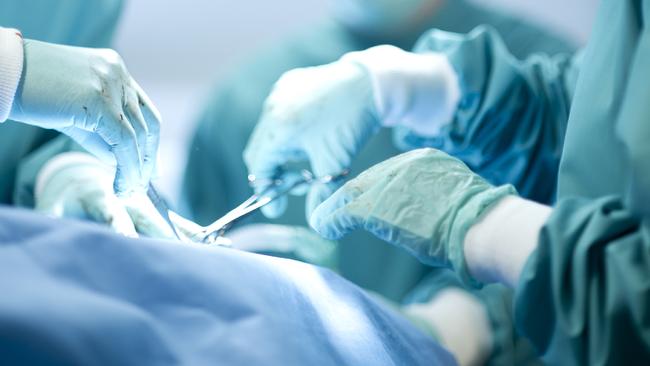Chest wall and arm arteries better than leg veins for heart bypass, Melbourne researchers reveal
WHAT is the best part of the body to grab some arteries to replumb your heart? Melbourne researchers have uncovered the key to giving surgery patients a better chance of survival.

VIC News
Don't miss out on the headlines from VIC News. Followed categories will be added to My News.
HEART surgery patients have better chances of survival if arteries from their arms and chest wall are used to replumb their heart, instead of leg veins.
By analysing 51,000 Australian patients, Melbourne researchers discovered the risk of dying prematurely was at least 22 per cent higher if any leg vein was used in coronary bypass surgery.
Around 1400 Australians have the lifesaving operation each month after their arteries become clogged, causing angina or heart attack.
The lead author, Royal Melbourne Hospital cardiothoracic surgeon Dr Alistair Royse, said surgeons could use arteries from the chest wall or forearm or leg veins, or a combination of both, to act as a new “tube” to replumb the heart and restore blood flow.
Dr Royse said their research found the use of any vein from a patient’s leg in the surgery reduced a patient’s chance of survival.
“The literature tells us that 10 years after surgery up to 50 per cent of the veins block off,” he said. “While some arteries fail early, our data suggest there is no evidence to show they will become diseased.”
Victorian surgeons now almost routinely used arteries to reroute blood to the heart muscle, but Dr Royse, also the University of Melbourne deputy director of surgery, said worldwide it’s estimated that 95 per cent of patients have at least one vein used.
While leg veins were traditionally used because they were easy to access, arteries were more robust and muscular, and better suited to carrying high-pressure blood flow.
National Heart Foundation chief medical adviser Professor Garry Jennings, who was not involved with the study, said the results reaffirmed arteries as the preferred option, but patients who had a bypass with veins should not panic. “If a vein graft develops new narrowings, then there are ways of dealing with that,” he said.
Minister for Planning Richard Wynne had a bypass using arteries at the RMH after his heart attack in December 2014.

“I’m pleased to report that my specialist tells me that they have replumbed for another 25 years,” Mr Wynne said.
“I’m doing exceptionally well and I’m incredibly grateful for the care that was provided to me by the RMH, and acknowledge this groundbreaking research work that Prof Royse has undertaken.”
The findings will be presented at the annual congress of the Association of Thoracic and Cardiovascular Surgeons of Asia, in Melbourne today.


